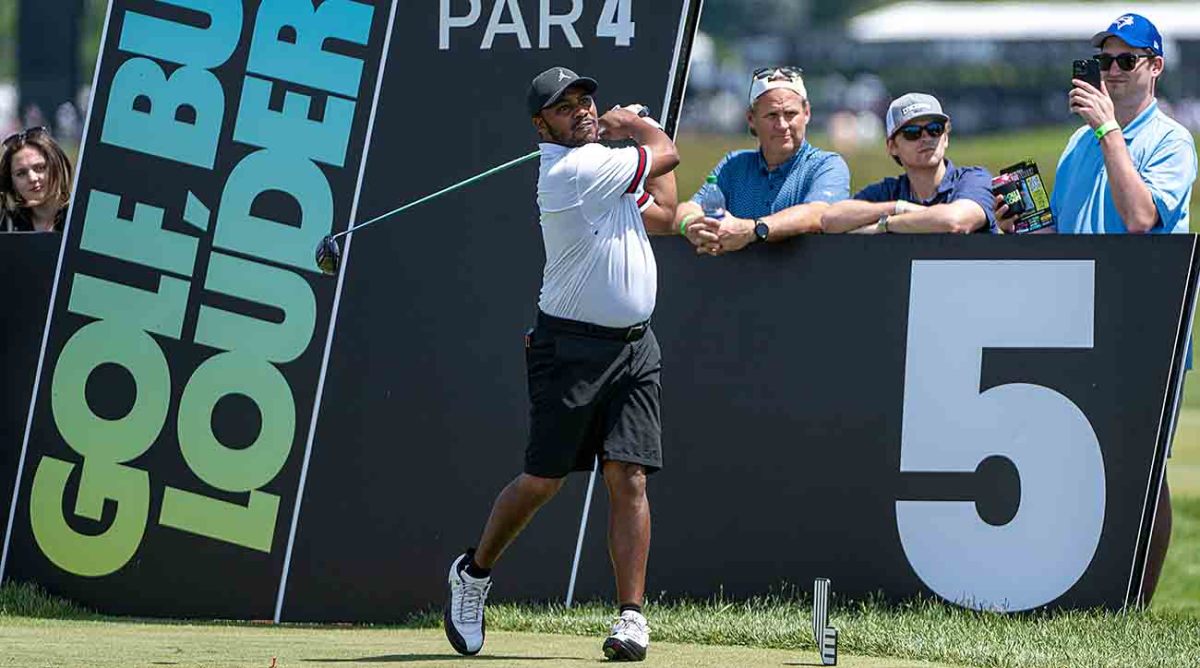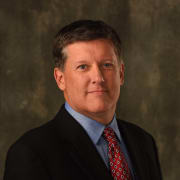There's One Underlying Fact in the Divided Golf World: Everyone's Getting Paid

It didn’t take Brandel Chamblee and Claude Harmon III to square off for the golf world to surmise that the LIV Golf League is at the top of the list when it comes to polarizing issues in the game.
LIV Golf is undoubtedly controversial and there are no signs that the angst on both sides will subside anytime soon.
More Weekly Read: No Cuts at Jack's Place? | The Michael Block Saga | Fore! Things
Harmon, the son of legendary coach Butch Harmon, teaches several players who play in the LIV Golf League including PGA champion Brooks Koepka and Dustin Johnson.
In a Golfweek story published last week, Harmon pushed back hard against the media in general and Chamblee specifically for coverage of LIV, suggesting all who cite the "sportswashing" theme associated with the Saudi Arabia-backed league are ignoring all of the other conflicts in worldwide politics associated with sports and the PGA Tour.
Chamblee had his own social media retort, and it was consistent with his take on LIV Golf from the beginning: “It is bad for the people who continue to be oppressed by the man who funds LIV Golf," wrote Chamblee, who of course was referring to Mohammed bin Salman, Saudi’s crown prince who oversees the Public Investment Fund—the Saudi sovereign wealth fund which backs LIV.
Aside from those directly involved with the PGA Tour or LIV Golf, you’d be hard-pressed to find two better examples of the extreme views from either side of LIV Golf.
And there are plenty of opinions that fall somewhere in between as well, with not much room for negotiation when it comes to trying to convince the other side you are correct.
After a year-plus of this debate, it is impossible to think that someone who holds Chamblee’s views about Saudi Arabia and its various transgressions against women, gays and basic human rights is going to be swayed in any way. Add the murder of journalist Jamal Khashoggi and the Saudi ties to 9/11 and you have an emotional issue that goes well beyond golf.
Harmon’s argument—that some of the same atrocities also occur in other countries that the networks cover and that the PGA Tour does business with—serves to complicate the matter and makes the political debate all the more heated. It’s hard to see either side budging.
But there is one point Harmon made that all should see as the reason for why we are where are right now: the stars getting paid.

"I want LIV to succeed and I want to LIV to work because I am pro-professional athlete," Harmon said in the Golfweek story. “I don’t think Rory McIlroy should go anywhere in the world without somebody paying him, including Memphis and Memorial. That’s how good he is. Jon Rahm. Scottie Scheffler, if you’re in that category, you shouldn’t be going anywhere without being paid because it’s how good you are."
If you want a reason why LIV Golf exists, that is it. You might not agree with the idea that golfers should get paid to show up—or that there should be an abundance of no-cut events or even that they aren’t compensated enough—but that is exactly why the idea of a rival circuit ever got momentum.
The discussions about this sort of thing have been going on for years. When the news of a possible rival tour that looks very much like LIV called the Premier Golf League first came to light in 2020, McIlroy acknowledged that he’d heard from representatives of the group as far back as 2014.
Over time, players and agents have been sold on the idea that having to earn everything you make on the course is not conducive to the entertainment nature of the business. Virtually no other athlete at the top level of any other sport operates that way. Certainly musicians, actors, etc., do not work without guarantees.
As an early Premier Golf League release said in February 2020: “At the moment, the best—the true global stars—subsidize the rest. The League will rebalance the economics. The best players need to compete, but not against 150 other guys ever week—47 will suffice."
How was it that the top players were considered to be underpaid?
One player-agent who wished not to be identified presented it this way: “The needle-movers, the guys who are responsible for revenue, go out and compete at the risk of not being paid," he said, citing the example of a big-name movie star. “He doesn’t shoot a movie for free and see how it does."
Tiger Woods was put forth as the best example.
“Tiger can sell a million dollars’ worth of tickets, be largely responsible for a large part of the television contract (the rights fees paid to the PGA Tour), and he has to shoot scores to get paid," the agent said. “There really is an issue there. The question is how to manage and respond to it."
The PGA Tour chose to respond to it with the Player Impact Program that was to pay $50 million in bonuses to 10 players. It increased that payout to $100 million last year for 20 players but is reverting to $50 million after this season. It also, as was always expected with a new television deal, increased the FedEx Cup bonus pool and promised yearly purse increases across the Tour.
The pandemic brought a halt to much of the rival talk, and during that time is when several members of PGL broke off and formed a new relationship that resulted in LIV Golf and near 100 percent backing by the PIF.
Their plans started to become public in 2021, with many of the same ideas that PGL had: 48-player fields, no cuts, big purses, everyone gets paid. While the upfront money with the PGL was not nearly as big as what LIV eventually paid to secure talent, it was still significant. One of the original proposals would have seen the top 12 players—or captains—receive $50 million apiece, with equity stakes in their teams.
PGL had PIF investment as well, but not to a controlling level. But while the source of the money is undoubtedly a concern, a rival tour it was going to be controversial no matter who funded it.
All you need do is look back 30 years ago when Greg Norman, now the commissioner of the LIV Golf League, broached the idea of a World Golf League. Smaller fields, fewer events, guaranteed money. There was no pushback on the funding source. Norman had Fox Sports lined up to televise and bankroll it.
But then-PGA Tour commissioner Tim Finchem threatened fines and suspensions, much like Jay Monahan has done now. And, ultimately, it was the late Arnold Palmer who helped derail the idea in a players-only meeting in 1994.
“It was very simple," Peter Jacobsen, a long-time Tour player and broadcaster, told Golf Digest of that meeting. “When Arnold said he didn’t want any part of it—we all said if it’s not good enough for Arnold, it’s not good enough for us. It’s as simple as that."
Soon, Finchem put in motion a plan for World Golf Championship events—small field, no-cut events that guaranteed players would be paid.
Like now, it was after LIV Golf began that the PGA Tour came back with its designated event model that will see some similar ideas: smaller fields, no cuts, guaranteed money.
Next year, there will be a minimum of eight events as part of the regular schedule with $20 million purses, including the Players Championship, which is $25 million. The three FedEx Cup playoff events will also be a minimum of $20 million with the season-ending Tour Championship paying the big FedEx bonus.
No matter where you sit on the issue, how it all started is clear. Where it all goes remains a mystery.
